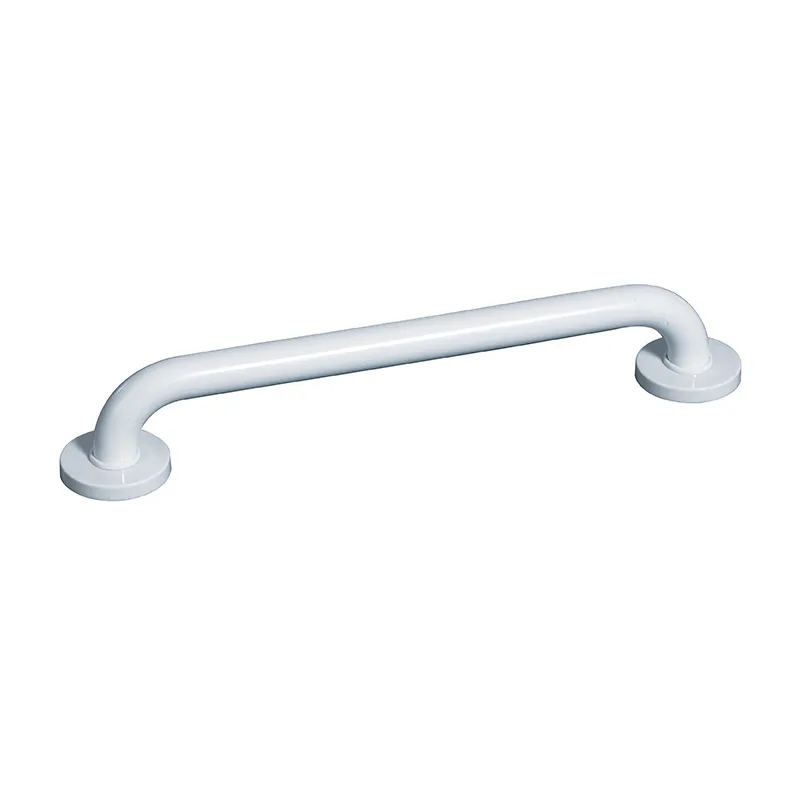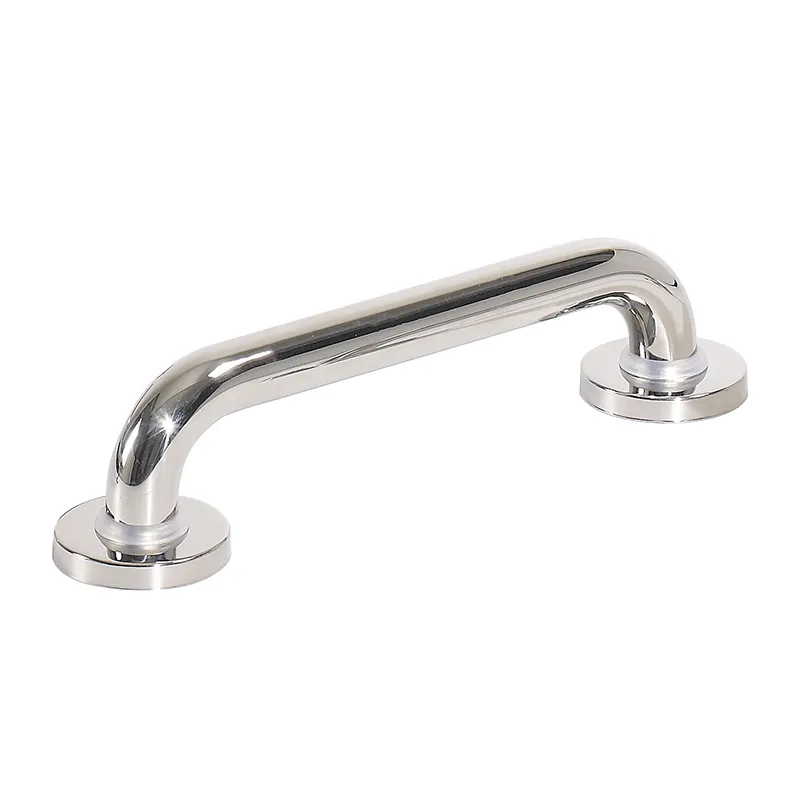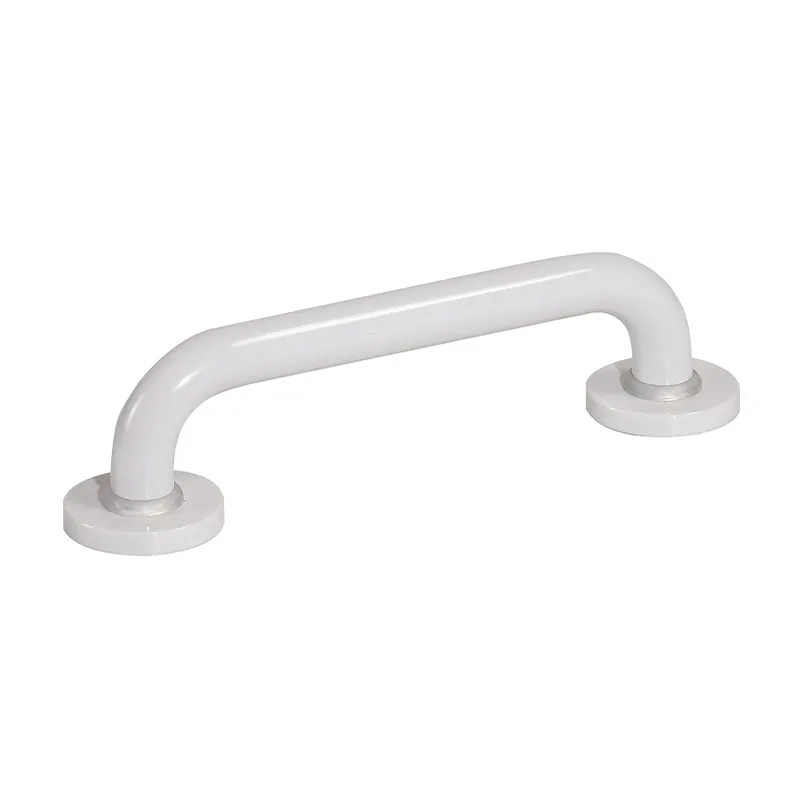
Should I install bathroom grab bars in my bathroom?
2024-11-19 15:30
The bathroom is an indispensable space in our daily lives, but it is also a potentially dangerous place, especially in wet conditions, where the risk of slips and falls is greatly increased. To address this problem, bathroom grab bars have become a common and effective safety feature. So, what are bathroom grab bars? What does it do? Why do we need to consider installing grab bars in our bathrooms?
This article will explore these issues to help readers gain a deeper understanding of the importance and practicality of bathroom grab bars.

What are bathroom grab bars?
Bathroom grab bars, as the name suggests, are auxiliary facilities installed in the bathroom, usually designed to help people maintain balance when entering and exiting the bathtub, shower or toilet, and prevent slips or falls. Bathroom grab bars are usually made of metal, plastic or other non-slip materials, and the surface is treated to ensure that people can have a firm grip when using them.
There are many types of grab bars. According to the installation location and usage scenarios, bathroom grab bars can be divided into the following categories:
1. Vertical grab bars: Usually installed in the shower or next to the bathtub, it is convenient for people to stabilize their bodies when standing, or provide support when getting up.
2. Horizontal grab bars: commonly found on the edge of a bathtub or next to a toilet, helping users maintain balance when sitting or standing up.
3. Angled grab bars: these grab bars are angled and are usually installed in areas that require multiple body position support, such as the junction of a bathtub and a shower.
4. Portable grab bars: suitable for people who need assistive devices temporarily, these grab bars can be installed when needed and removed after use, making them more flexible.
These different types of grab bars are designed to address various potential risks in the bathroom and help users safely complete daily cleaning or toileting actions.
What are the functions of bathroom grab bars?
The main function of bathroom grab bars is to ensure the safety of users, especially in slippery environments, it can effectively reduce the risk of slipping. Here are some of the main functions of bathroom grab bars:
Prevent slips
The floors and walls of bathrooms are prone to becoming slippery due to frequent contact with water vapor, especially on tile surfaces, which are difficult to prevent falls. For the elderly, pregnant women or people with physical disabilities, falls in the bathroom may cause serious injuries, such as fractures and head trauma. Bathroom handrails provide these groups with extra support, helping them maintain balance when getting in and out of the bathtub, shower or toilet, and avoiding unnecessary accidents.
Enhanced independence
For people with limited mobility, bathroom handrails can enhance their independence in daily life. Elderly or disabled people often need to rely on others to complete private behaviors such as bathing or toileting, which makes them feel uncomfortable or even lose self-esteem. Installing handrails allows them to complete these activities on their own, thereby improving their self-confidence and reducing their dependence on others for care.
Simplified daily actions
Even for healthy young people, in a wet and slippery environment, they may slip due to a moment of carelessness. Bathroom handrails can simplify many daily actions, such as getting up, sitting down, bending over to pick up things, etc., provide more body support points, and reduce the dangers caused by improper movements. For example, when standing in the bathtub, the handrails can provide a stable grip for both hands to ensure that the body will not lose balance due to the slippery ground.
Improved psychological security
Bathroom handrails not only provide physical safety, but also provide psychological comfort for users. Even if you don't use handrails frequently, knowing you can rely on them when you need them makes you more confident and less anxious. This psychological sense of security is especially important for people who have fallen in the bathroom.

Should I install bathroom handrails in my bathroom?
So, should bathroom handrails be standard in every family bathroom? From the perspective of risk prevention, the answer is yes. Although many people think that only the elderly or disabled need bathroom handrails, in fact, the risk of slipping in the bathroom is universal, and anyone can have an accident due to slippery floors, missteps, or physical discomfort. The following points can help us better understand why every family should consider installing bathroom handrails.
Common safety hazards in the bathroom
Whether it is the steam during bathing or the soap and shampoo left on the floor, the bathroom will become extremely slippery. Especially during the washing process, people are more likely to lose their balance due to the large amplitude of the movement. As a simple auxiliary facility, bathroom handrails can effectively reduce the occurrence of these accidents.
Diverse usage scenarios
The use of bathroom handrails is not limited to the elderly or people with limited mobility. It can provide additional help for all people who use the bathroom. For example, children may feel uncomfortable with the water temperature or sudden movements when bathing, and they can hold onto the handrails for stability. Similarly, for pregnant women, who are more likely to lose balance in the shower as their center of gravity changes, handrails can provide additional support.
Preventing accidents before they happen
Although healthy people may not feel the need for bathroom handrails in normal times, accidents are always unpredictable. Falls can happen to anyone, especially as the body's flexibility and responsiveness decrease with age, the importance of bathroom handrails becomes more prominent. It is a responsible choice to plan ahead and provide safety for yourself and your family in advance.
Long-term cost-effectiveness
Many people may think that installing bathroom handrails is an unnecessary additional expense, but in fact, handrails are relatively inexpensive to install and require little maintenance. If the lack of handrails leads to a slip or fall, the medical expenses and recovery time for treatment will far exceed the cost of installing the handrails. Therefore, installing handrails is a cost-effective investment in the long run.

What factors should be considered when installing bathroom handrails?
Before deciding to install bathroom handrails, it is necessary to understand some key installation and selection criteria. Different bathroom layouts, family members' needs, and personal budgets will affect the choice and installation location of handrails.
Material selection
The material of the handrail directly affects its durability and safety. The handrails on the market are mainly made of stainless steel, aluminum alloy, plastic and other materials. Stainless steel handrails are the first choice for most families because of their durability and strong rust resistance. Although plastic handrails are cheaper, they have poor load-bearing capacity and durability, and are usually suitable for temporary or light use.
Length and installation height of handrails
The length and height of the handrail should be selected according to the height and needs of the user. Generally, the handrail should be installed at a height of 80 to 100 cm from the ground so that the user can easily grasp it. For handrails next to the bathtub or in the shower, it is best to choose a longer design to provide sufficient support range.
Fixing method
There are two ways to install bathroom handrails: one is a screw-type handrail that is directly fixed to the wall, and the other is a suction cup portable handrail. The screw-type handrail is fixed to the wall with screws, has a strong load-bearing capacity, and is suitable for long-term use. Suction cup handrails can be flexibly installed and removed, which is suitable for rental or temporary use, but their load-bearing capacity is limited.
Anti-slip design
To ensure safety, when choosing handrails, products with anti-slip surfaces should be given priority. Handrails with anti-slip textures or rubber wrapping can provide a better grip and are not easy to slip even when your hands are wet.








